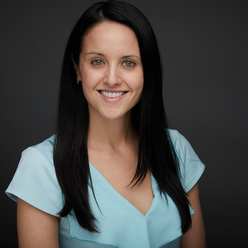Key Takeaways
- Global value chains have aided growth in developing countries, but without the strong institutions commonly found in the developed world, trade partners often encounter complexities around issues like wages, prices, and working conditions.
- Data from the coffee and garment sectors offer broader lessons for leveraging export relationships to improve sustainability across global value chains.
- The market power of international buyers can negatively impact prices and conditions exporters and workers face. With that said, those buyers can also enter into beneficial long-term supply relationships with counterparties in the developing world.
Research
Classical economic models of cross-border trade in research rarely take into account many of the thorny conditions that exist in the real world. Many value chains involve buyers from wealthy countries doing business with sellers from poorer countries in the developing world that lack the institutions taken for granted in the developed world and in academic economic models of cross-border trade. Those institutions may include a fair and efficient court system to adjudicate trade disputes or regulations governing labor practices or environmental stewardship. In many such value chains, including those analyzed by the authors, markets at different steps along the value chain may not be competitive, with some actors having market power and others going without. In the coffee and garment industries in particular, large, international buyers may have market power, while in the domestic part of the chain, exporters of those goods may have market power over farmers and workers, respectively. This means that it may be valuable for parties to engage in longer term relationships. In the absence of the institutions mentioned above, the authors argue, many issues are addressed through relationships between players throughout the value chain. A buyer of finished products may insist on certain working conditions for laborers manufacturing its goods, for example, or might rely on a longstanding track record of timely deliveries from a producer when deciding to place a larger order.
A paper from Columbia Business School, “Global Value Chains in Developing Countries: A Relational Perspective from Coffee and Garments,” explores the governance complexities arising from trade partnerships that cross borders between developed and developing countries. The study was co-authored by Laura Boudreau of Columbia Business School, Julia Cajal Grossi of the Geneva Graduate Institute, and Rocco Macchiavello of the London School of Economics.
These cross-border relationships are often informal, and emphasizing them should not be seen as ceding the work of government to the private sector or the marketplace. Still, a better understanding of how they work, particularly over the long term, and how they might work better might improve outcomes for the developing countries where they have influence. For example, a garment buyer that engages in relational trade might require that producers meet certain benchmarks for diversity or equity in labor practices and have those benchmarks audited. The authors also give the example of two groups that emerged in Bangladesh following the 2013 collapse of the Rana Plaza factory that killed over 1,100 people. One of these was a multi-stakeholder initiative that was made up of brands like H&M, activists like the Clean Clothes Campaign, and labor unions including the International Labour Organization. The group successfully lobbied for stronger worker protections in the country.
Conclusion
In an age of information overabundance, companies have plenty of data to parse as they seek to understand and shape consumer preferences. How to sort through that data and what to infer from it are multibillion-dollar questions—and Simonov’s research implies that managers may be overestimating how intentional consumers are in their online searches. Searches that begin with advertisements lead to more product visits than active searches. But these product visits are lower quality and less likely to lead to purchases. That means that, whereas we could once infer consumer preferences by where in the search process a product visit occurs, companies must also pay close attention to how a consumer arrived on their site. Distinguishing between active and passive search helps companies better understand their brand’s existing strength and, therefore, how to improve it.


